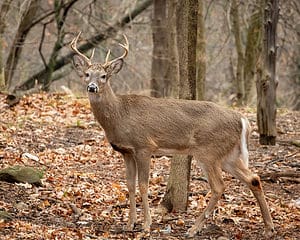Observing wildlife in their natural habitats can be a relaxing, and sometimes exciting, pastime. Deer, especially, are fun to watch with their shy and gentle ways. But what if you could bring them right into your yard? You’d have great seats for an evening of deer watching. Read on for 20 easy-to-follow methods for attracting deer.
How to Attract Deer With Food
Important Note: In some states, using food to lure deer is illegal. In Alabama, it’s legal to feed deer, except when baiting them for hunting. In other states, such as Arizona, it’s legal to feed or bait deer. Alternatively, in states like Delaware, you can feed deer, but you can only bait them on private land. The laws can be slightly different for each state, so make sure you know your own state’s laws.
1. Plants

Deer eat all kinds of native plants, tree fruit, and bark.
©iStock.com/steverts
Deer are attracted to food, pure and simple. However, certain trees and other plants entice them more than others. Some of their favorite plants are petunias, sunflowers, clematis, dandelions, and clover. If you plant some of these, they will surely attract deer to your yard. Of course, you don’t even have to plant dandelions. They’ll grow up all over on their own.
Oak, beech, and chestnut trees are enticing to deer as well. Deer actually eat the acorns off the oaks as a major part of their diet. Fruit trees, such as crabapples, are also great for luring deer to your yard. Some experts report that pear trees are a favorite for deer.
2. Apples

Though any type of apple can attract deer, smaller, sweeter ones tend to be the best.
©Poleijphoto/Shutterstock.com
Deer love the smell and taste of apples, and they tend to prefer sweet ones over sour ones. Smaller apples work best because they’re easier to manage with their little mouths. Crabapples are a great choice for attracting deer. If you don’t have a tree, you can buy apples and put them in a pile in your yard.
Sweeter apples, like Dorset golden and Honeycrisp, are good choices. Buying slightly rotten apples can save you money and prevent waste, and that won’t bother the deer at all. They seem to prefer them softer and slightly rotten, when they give off a pungent smell.
3. Peanut Butter
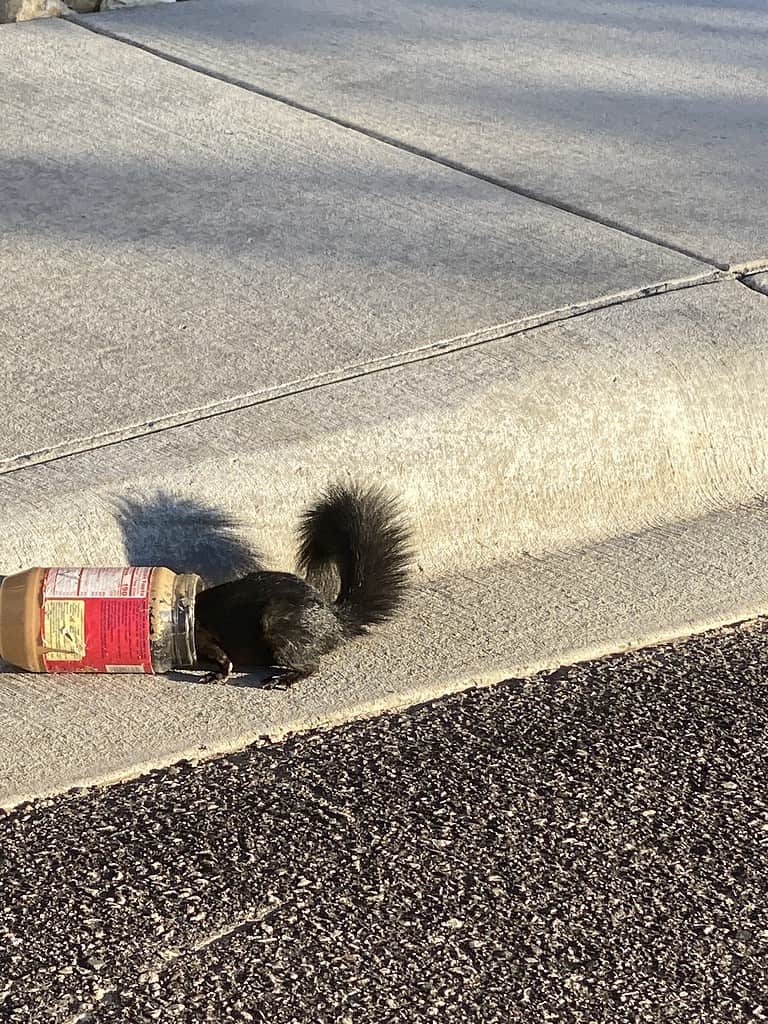
You may want to check your peanut butter jars often because squirrels love this treat, too!
Who doesn’t love peanut butter? Well, deer certainly won’t turn their nose up to this delicious nut butter. Here’s an easy way to use peanut butter to attract deer: remove the lid and drill three holes into it. Then, screw the lid into the tree and attach the peanut butter jar to it. At this point, the jar should be sticking straight out, perpendicular to the trunk of the tree. Then, using a box knife, cut the bottom of the jar off so the deer can lick the contents.
Make sure the jar is at deer height — about 2-3 feet from the ground — so that they can easily eat from it. Just remember that squirrels may find your treat pretty tasty as well, so it may disappear quickly. Alternatively, if you don’t want to put screws into a tree, you can hang the jar from a low branch.
4. Salt Blocks
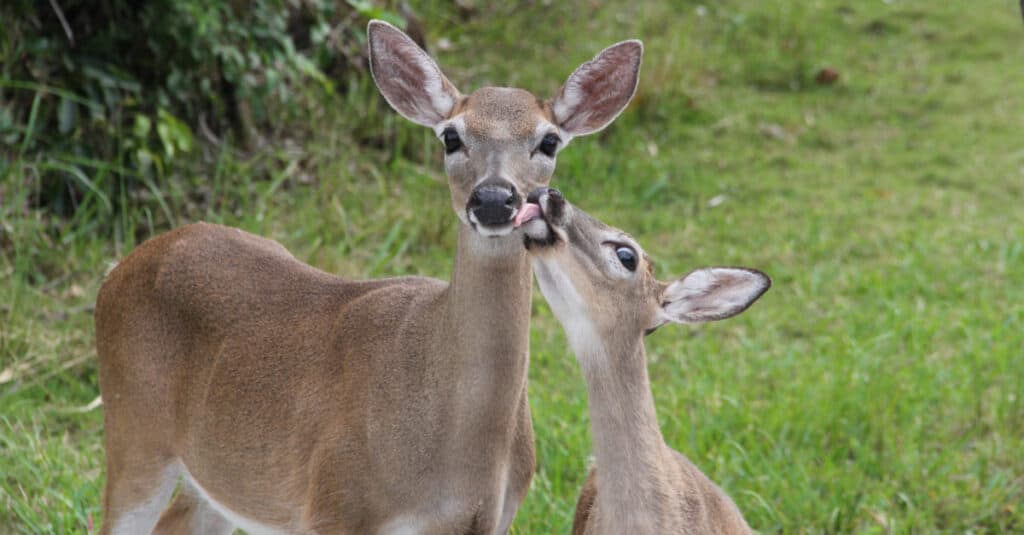
Deer crave salt, and they instinctively know they need sodium in their diets.
©Arend Trent/Shutterstock.com
Depending on where you live, you may refer to these blocks as salt blocks, salt licks, or mineral blocks (if other minerals have been added). Whatever you call them, deer love them. A lot of the minerals they need in their diet, like sodium, iron, and zinc, aren’t found in nature. Yet, deer know instinctively that they need these nutrients.
While mineral blocks are healthier for deer due to the extra nutrients, a plain old salt block will also attract them. Deer crave salt as much as people crave potato chips and pretzels. This ensures that they’ll keep coming back for more.
5. Herbs
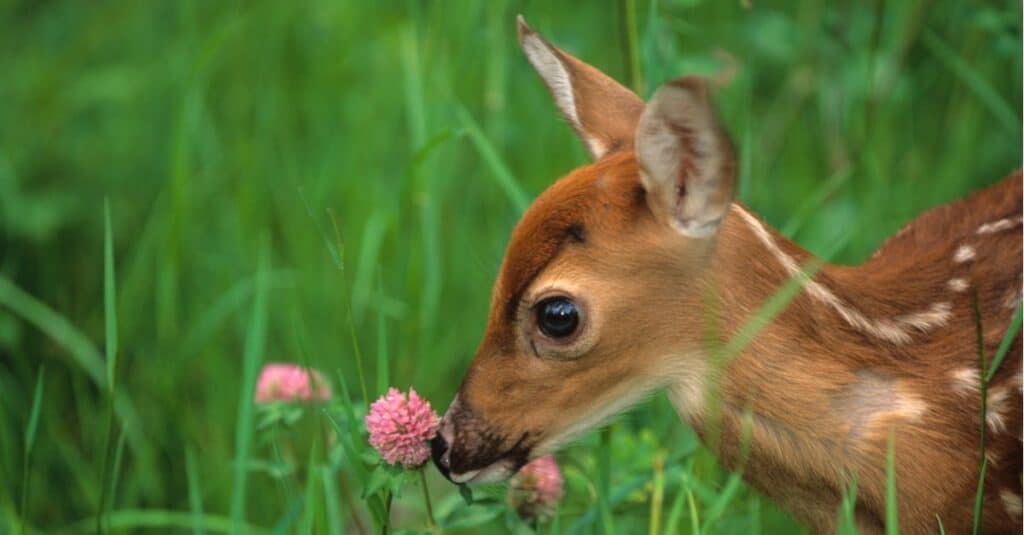
Even the smallest fawns graze on clover.
©iStock.com/twildlife
Deer are grazers. They love soft, sweet-smelling plants, soft stems, and broad leaves. They specifically enjoy grazing on clover. Three perennial species of this herb are red clover, alsike clover, and white ladino. While these are easy to grow, it’s important to remember that some of them are considered invasive species in certain states.
6. Food Plots
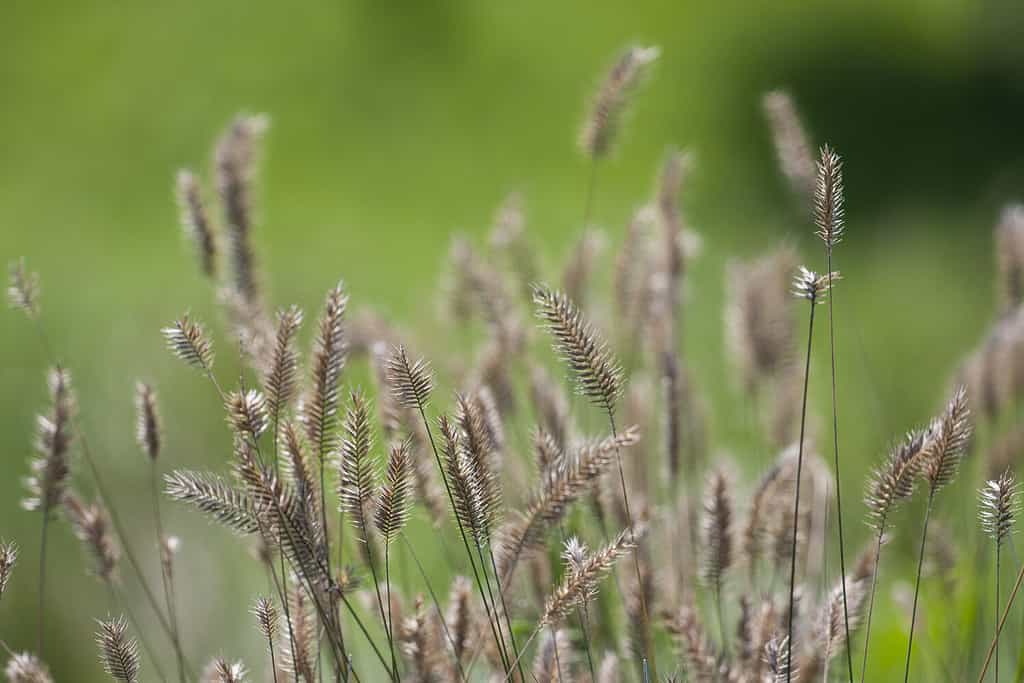
Offering a variety of plants in a safe and sheltered spot can attract deer all year.
©Viktor Loki/Shutterstock.com
A food plot is an area used to plant supplementary food for any wildlife. In this case, deer are the animals you’ll be feeding. There are some important things to remember, though. Before delving into making a food plot, you’ll need to consider a few things:
- Once you create a plot, the deer will become dependent on it, so you’ll need to sustain it.
- You’ll need to decide if your food plot is meant to merely attract deer or to increase their health.
- It can become expensive if you keep it year-round.
- It can be time-consuming.
- You need at least 300 square feet of land.
- The area needs to be safe from predators and harsh weather conditions.
Once you’ve decided whether you want to replenish and work on your food plot all year, every year, you can think of what to plant. For a year-round plot, some experts recommend planting cool-season plants, like winter wheat, oats, or clover, and warm-season plants like corn and beans, native plants, and legumes. As a result, deer will have food year-round.
7. Winter Feeding
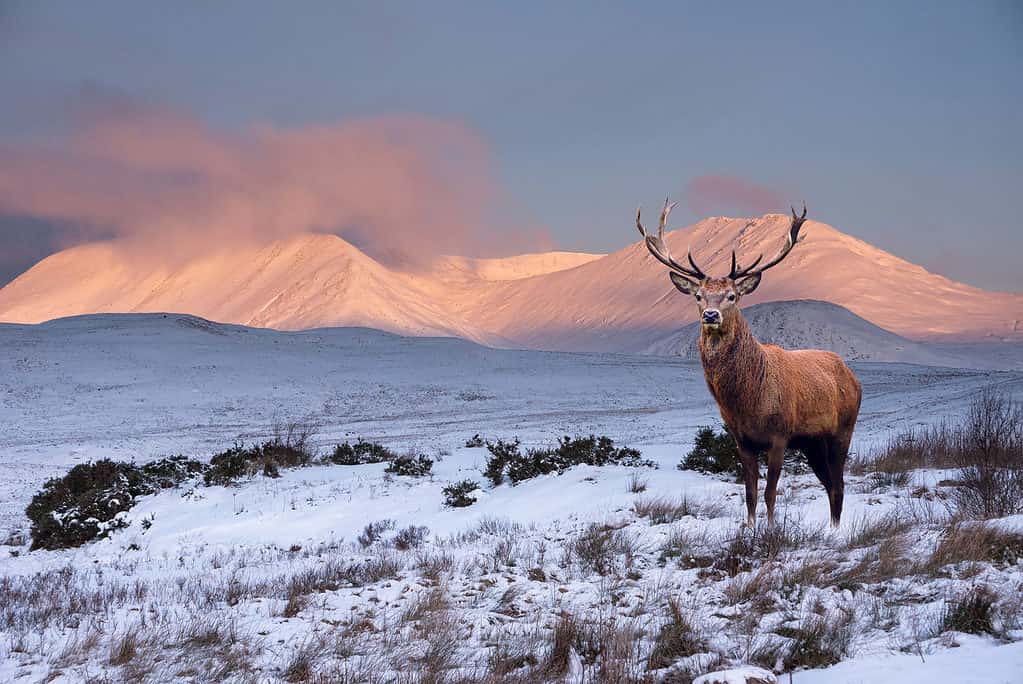
Food can be hard to come by in the winter, causing diseases and sometimes death for deer.
©iStock.com/Matt_Gibson
If a food plot is a little more involved than you’d like, you can still attract deer year-round by providing food throughout the seasons. Winter can be a very difficult season for deer. The plants they usually forage may not grow in cold weather, or they may be covered in snow. Trees won’t bear fruit, and deer will be looking for nourishment.
It may be wise to feed deer the same kind of foods they’ve become accustomed to eating in the winter. Things like buds, limbs from fruit trees that you’ve pruned, and other woody browse (leaves, berries, bulbs, or saplings) are what they’d normally eat. Also, make sure that you don’t suddenly start feeding them in the late winter, thereby shocking their systems. If you’re feeding them year-round, you can supplement their winter diet with kale, radish, apples, cabbage, or turnips.
How to Attract Deer With Scents
Deer have thousands of scent receptors in their noses and have up to 1,000 times more acute smell than humans. They can distinguish among as many as six smells at once. They can even detect acorns with worm infections and discern them from good ones by merely using their sense of smell. You can attract deer to your yard with the right scents.
8. Herbs
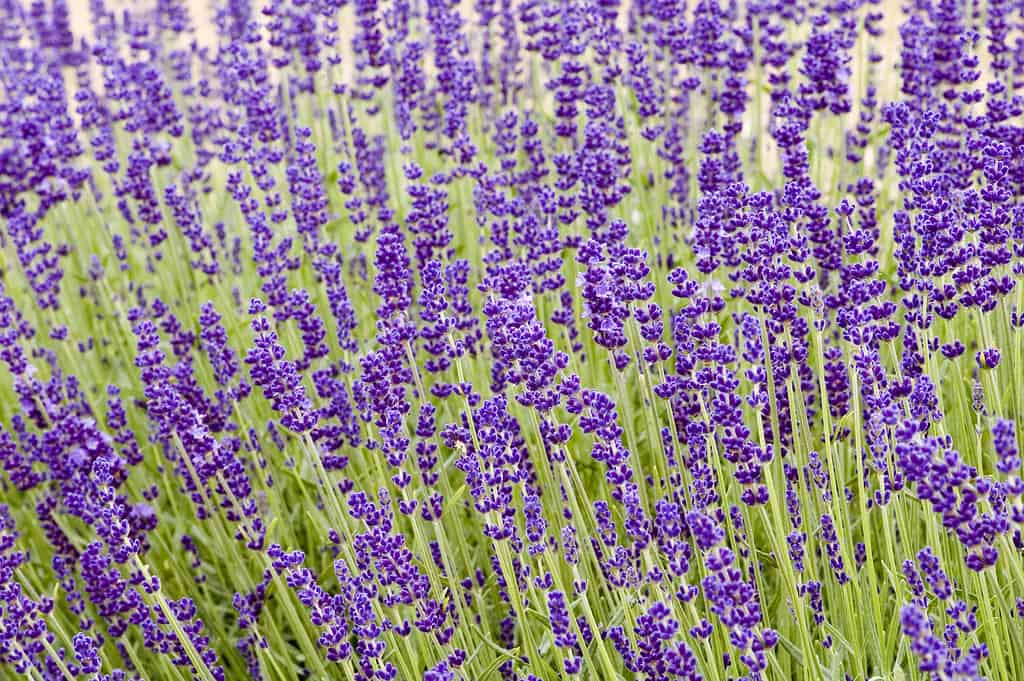
Lavender is one of the herbs that can attract deer.
©gardendata/ via Getty Images
Deer eat some herbs, as mentioned earlier. Other herbs attract them by their scent. Some of these are New England aster, lavender, and echinacea. If you sprinkle some of these herbs around your yard, they’ll do double duty. First, they’ll help to cover the scents of you and any pets you might have. Second, the herbs’ fragrance will appeal to the deer.
A crucial thing to remember is that deer do not like pungent or acrid odors. Herbs like oregano, sage, or basil will end up repelling deer rather than bringing them to your yard. Keep to the softer, sweet-smelling herbs to attract them.
9. Vanilla
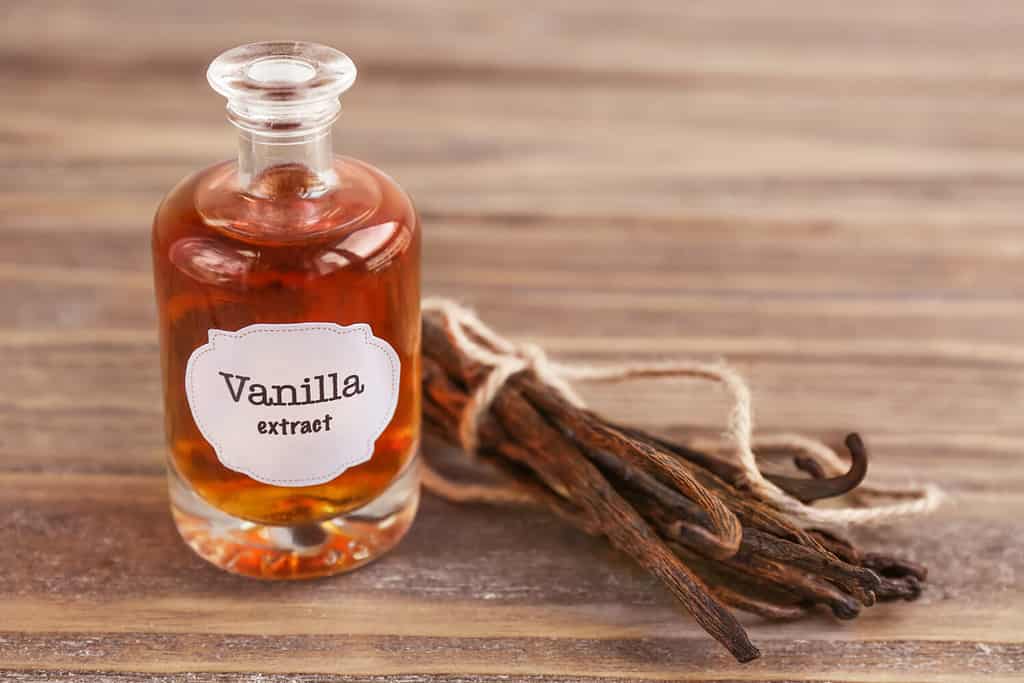
The soothing aroma of vanilla extract can help to attract deer.
©Africa Studio/Shutterstock.com
Some people have used vanilla extract to attract deer. On the positive side, it’s easy to get and relatively inexpensive. On the negative side, there isn’t an exact recommended dose. If it’s too strong, it will repel them. However, if you mix it with a little water in a spray bottle, you can spray it on a tree or fence. The soothing aroma could very well bring in deer. You could also mix it with your peanut butter for a double dose.
10. Deer Urine

Bucks sniff for the hormones found in does’ urine during rutting season.
©iStock.com/EEI_Tony
It may sound a little gross, but deer urine can be a deer enticer. Before investing in it, however, it’s important to note that natural deer urine products are banned in some areas because they may potentially spread chronic wasting disease. That said, synthetic urine scents are available as well.
One of the principles behind using urine scents is that the smell of doe urine will attract a male deer. Additionally, the smell will camouflage other smells that could spook the deer. Finally, deer urine creates a sense of familiarity for the deer, making the area comfortable for them.
How to Attract Deer by Making Them Feel Safe
Deer have a pretty short lifespan — around three to six years only. These fairly defenseless animals are prey to many animals in the wild, including humans. They have come to rely on their acute sense of smell and on the evolutionary eyes on the sides of their heads to alert them to danger. Therefore, creating an area of refuge for them might just be the best way to get them into your own space.
11. Location, Location, Location

When a deer can’t smell, see, or hear a predator, it feels safe.
©klarion/Shutterstock.com
Real estate isn’t the only area in which location is key. If you want deer to come onto your property, you’ll need to create a location in which they feel safe. One way to do this is to designate an area that is untainted by pet and human scents as much as possible.
Find an area where there is some coverage. This could be a spot where there’s taller grass, more trees, and it’s away from activity. Needless to say, it should be as far from any street or road as possible. It could be on the edge of a wooded area or near a fence. Deer will come in to eat more consistently if their eating area is safe.
12. Water Source
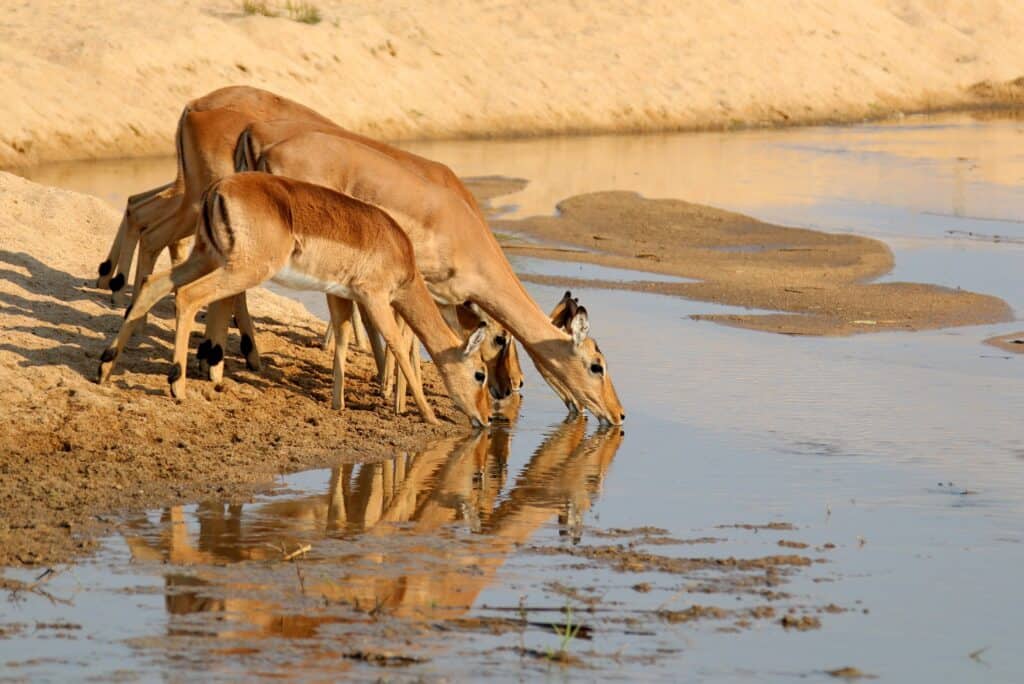
Deer will be drawn to where there is a safe water source.
©Khalil Ahmed/Shutterstock.com
Water is a key component in keeping deer around year after year. If you’re lucky enough to have a stream running through your property or a pond on it, you’re already set. However, even if you don’t have a ready-made source of water, you can add one quite easily. The nice thing about creating your own is that you can add nutrients deer need, such as selenium, sodium, calcium, zinc, phosphorous, and copper.
You can dig a hole in your safe area that’s big enough to hold a one-hundred-gallon (or bigger if you like) plastic tank. A common depth for these tanks is 25 inches deep with length and width generally measuring 51 inches by 31 inches. These plastic tanks are relatively inexpensive and will prevent the water from being absorbed by the soil or sand around it. Just remember to leave a stick that leads from the bottom up the side of the tub to provide an escape for any smaller animal that may accidentally fall in.
13. Trailblazing

Deer will often use natural or man-made paths to access your yard.
©William Dillingham/Shutterstock.com
Deer will choose the path of least resistance, so to speak. If they can use a ready-made path, they will follow it to your backyard. However, you don’t have to rent heavy equipment to make a perfect path. Instead, use a machete or hacksaw to clear away the brush. You don’t have to get rid of the brush and leaves you cut down; just use them as a natural funnel by pushing them to the sides of the path.
14. Fencing
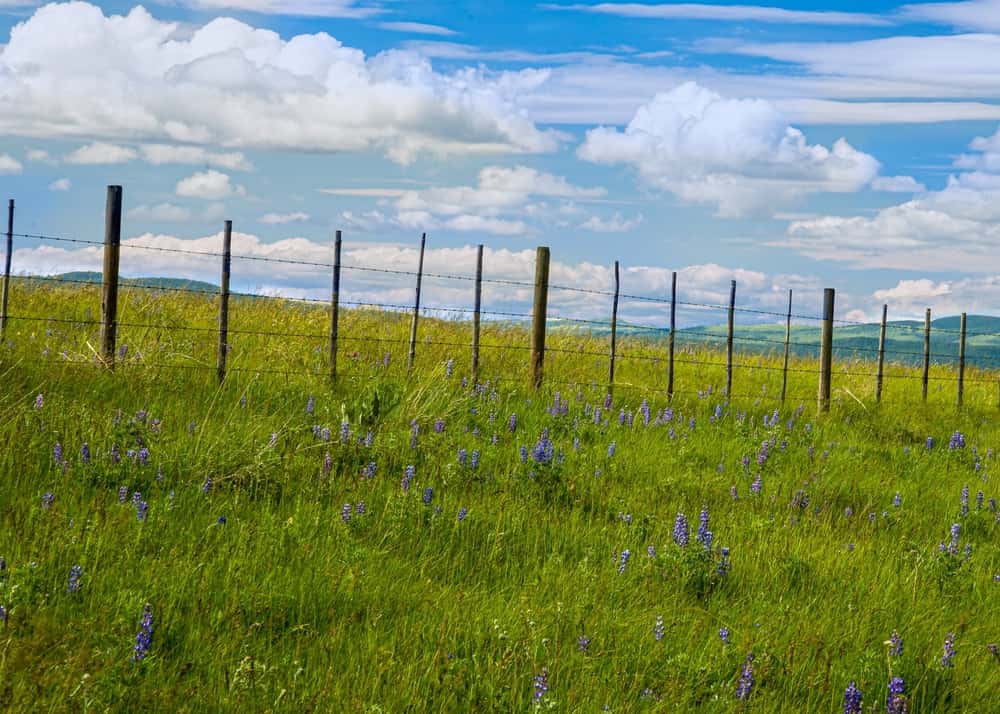
Use any fencing to your advantage in luring deer to your yard.
©Jon Spalding/Shutterstock.com
If you have existing fencing, you can use this to your advantage. Even fencing that has lost bits and pieces can be used as a funneling lure for deer. When deer feel that they have a safe travel corridor, they will feel more secure in following a trail to your yard. If you have a fence around the perimeter of your property, you can cut a hole big enough for a deer to fit through to get to your designated deer area.
15. Tall Grass
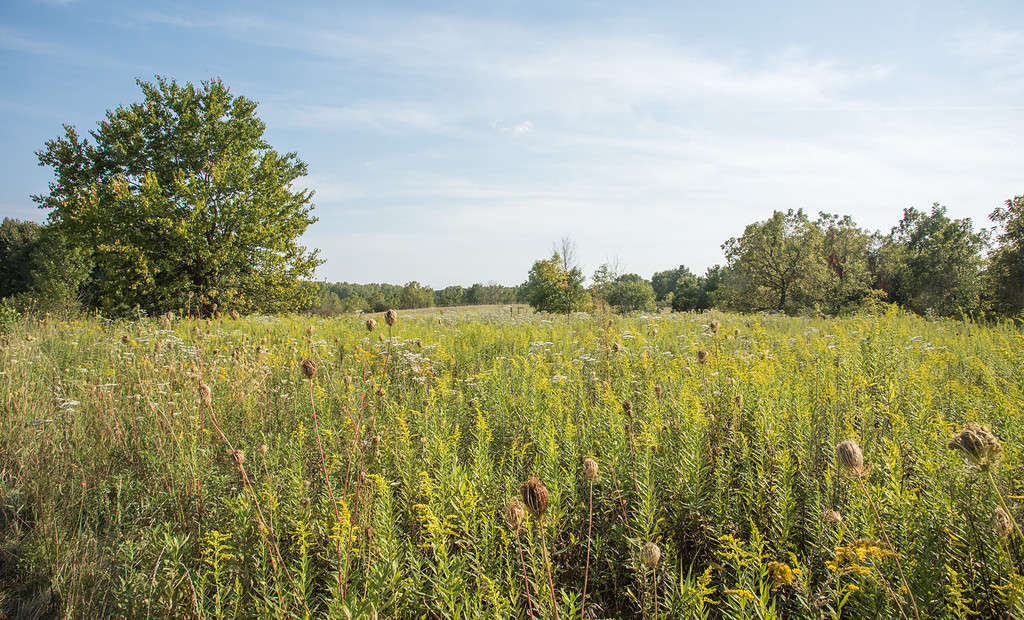
Deer look for tall grass to keep them out of the open.
©iStock.com/EAGiven
When setting up your deer area, provide areas with tall grass to promote a feeling of safety. Deer have deeply ingrained survival skills. They’ll look for areas of cover to keep them from being out in the open. Along with tall grass, you can also plant bushes and small trees to create a safe zone for the deer.
If you’re going to plant grass in your deer area, consider the varieties that they prefer to eat. Grasses such as wintergrass, rushes, witchgrass, rescue grass, panic grass, and sedges are great varieties. Beautyberry, plum, dogwood, raspberry, and blackberry bushes are also great for both providing cover and for offering nutrition.
16. Make Their Bed
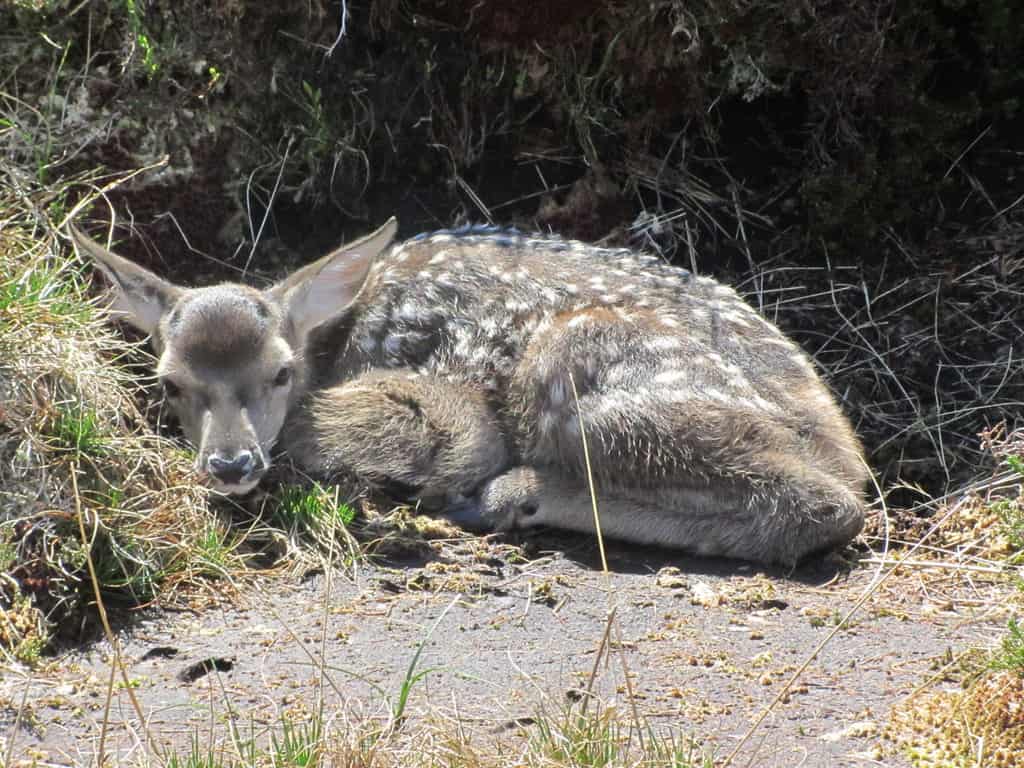
An area close to a food source is a great spot for a fawn to bed down.
Deer look for safe spots to bed down. For does, an area close to a food source and water is appealing. Bucks, however, prefer to find a spot off by themselves. If you make the bedding area a little bit away from the food source, then you’ll be able to observe them as they go back and forth.
The bedding area can be made by using elevated brush piles and other forest debris to create a safe and hidden place to sleep. If you have smaller trees, you can hinge-cut them — cut them so the top part falls over but doesn’t completely separate — to create a feeling of protection. This also works for creating a travel corridor to the bedding area.
17. Avoid Chemical Lawn Products
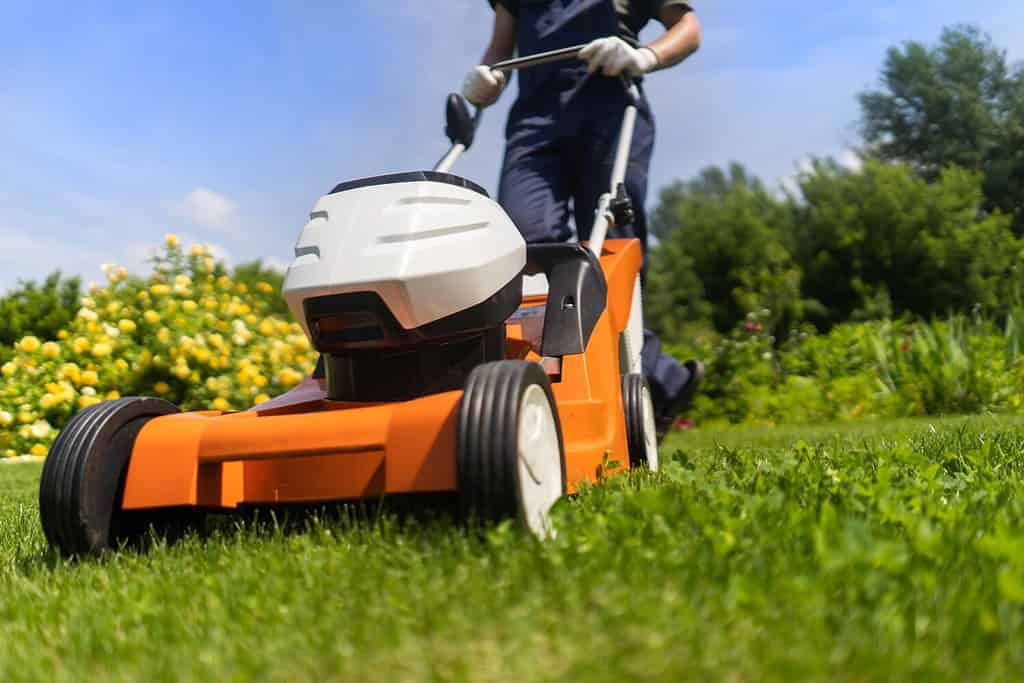
Use organic products on your lawn, and only mow outside of the deer area. They prefer long grass.
©africa_pink/Shutterstock.com
Deer use native grasses and plants as food, cover, and bedding. With their incredible sensory receptors, they can detect any strange or foreign odors in their environments. If you want deer to feel safe and comfortable coming to your yard, you’ll need to avoid any strange scents that could turn them away. There are many organic products for lawn care available online and in stores.
18. Lighting
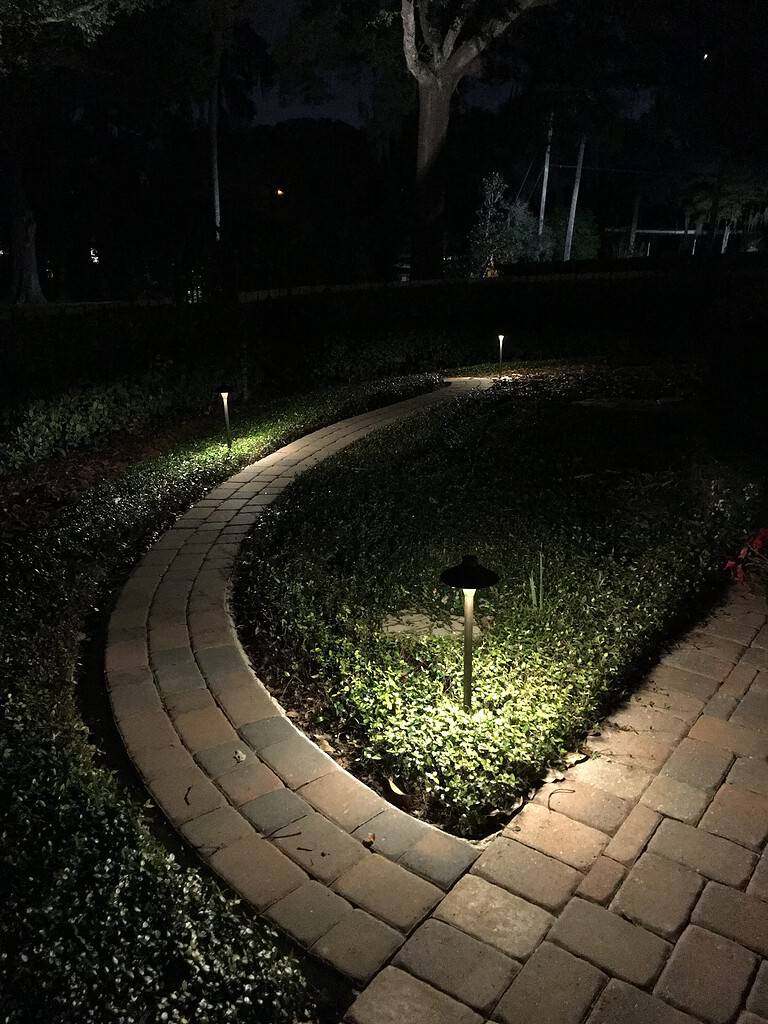
Soft lighting will make deer feel safer than bright lights.
We all have heard the phrase “like a deer caught in headlights.” Deer are easily spooked by bright lights. If you have sensor lights that will suddenly throw a bright light on your yard when they detect motion, this will repel deer. Instead of bright lighting, keep your outdoor lights soft and dim. Try to avoid using them near your deer area.
19. No Pet Zone
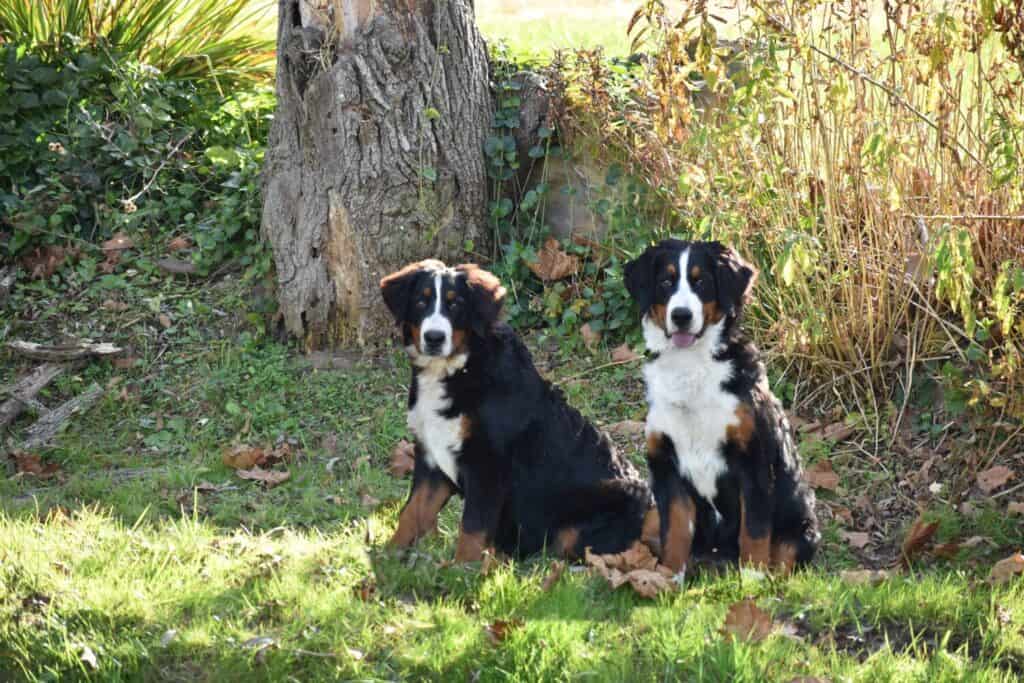
Dogs can drive away deer with their noises and scents.
©SShank/Shutterstock.com
If you have pets, especially dogs or cats, you’ll need to make sure they’re indoor pets. They’ll need to be supervised when going out to keep them out of the deer area. Not only will a dog’s barking frighten deer away, but the scents your pets leave around the yard will alert the deer to danger as well. If you make sure your pets relieve themselves well away from the deer area, this will help to keep the deer coming around.
20. Respect
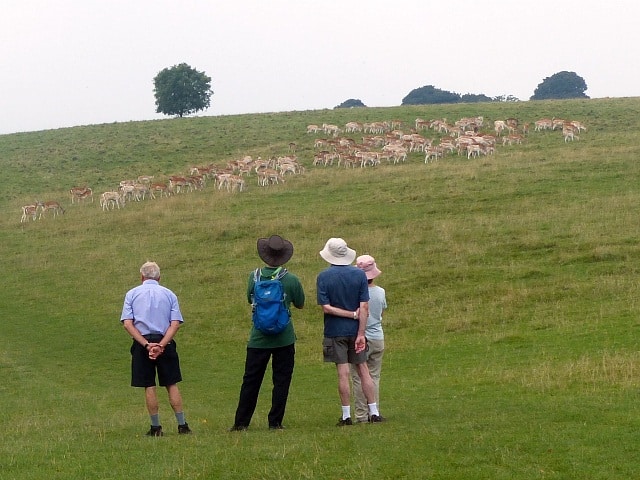
It’s good to watch from afar, giving deer their space.
©Watching deer at Dyrham Park by Robin Drayton/CC BY-SA 2.0 – Original / License
It’s always exciting to watch wildlife in action. However, it’s important to remember that we are simply observers and not part of the action. When deer come into your yard, you can watch safely from a distance. Using binoculars or a game camera can give you a more up-close view. But the bottom line is to always respect the deer, or any wildlife for that matter, and let them do their thing.
Summary Table
Below is a summary table recapping the methods for attracting deer and important information to remember.
| Ways to Attract Deer | What to Remember | |
|---|---|---|
| 1. | Plant attractants. | Deer love native, soft and sweet-tasting, and broadleaf plants |
| 2. | Leave apples for them. | If you don’t have fruit trees, you can leave a pile of sweet apples for their food. |
| 3. | Use peanut butter to lure deer. | Make the peanut butter easy to reach for deer, but remember that squirrels may eat it, too. |
| 4. | Leave a salt block. | A salt block will attract deer, but a mineral block will offer more nutrients. |
| 5. | Use attractant herbs to get them into your yard. | Deer prefer softer, less pungent herbs. Avoid herbs like basil, oregano, or sage. |
| 6. | Create a food plot. | Food plots can be large and intricate or simple and smaller. |
| 7. | Feed them in the winter. | Don’t suddenly start feeding them in late winter, though, or you’ll shock their systems. |
| 8. | Scatter herbs around your yard. | You can use the herbs’ scents to attract the deer or to mask the human and pet smells. |
| 9. | Put vanilla extract on stumps or fences. | You’ll have to experiment with how much to use. Diluting it with water helps to keep it from being overpowering. |
| 10. | Put deer urine around the deer area’s periphery. | Using synthetic deer urine prevents the potential spread of chronic wasting disease. |
| 11. | Find the best spot. | Find a spot that’s away from busy areas. It should have cover and a food and water source. |
| 12. | Provide a water source. | If your deer area doesn’t have a natural water source, it’s easy to make an inexpensive one. |
| 13. | Give them a trail to your yard. | You can hinge-cut trees and clear brush, keeping these along the sides of the path to create a travel corridor for deer. |
| 14. | Use existing fencing to your advantage. | Fencing can be part of a travel corridor or provide a safe barrier. |
| 15. | Keep the grass tall. | Deer will eat the grass in their area and also use it for cover. |
| 16. | Provide a safe place for them to bed down. | Deer need to feel safe and out of the open when it’s time to bed down. |
| 17. | Use only organic lawn products. | Deer can smell chemicals and will avoid areas that have them in the grass and plants. |
| 18. | Keep the lighting soft and dim. | Deer are startled and driven off by bright lights. |
| 19. | Keep your pets inside. | Deer will avoid areas with your pets’ scents. |
| 20. | Always treat the deer with respect. | It’s great to be an observer, but it’s important to keep out of the deer’s space. |
Thank you for reading! Have some feedback for us? Contact the AZ Animals editorial team.







